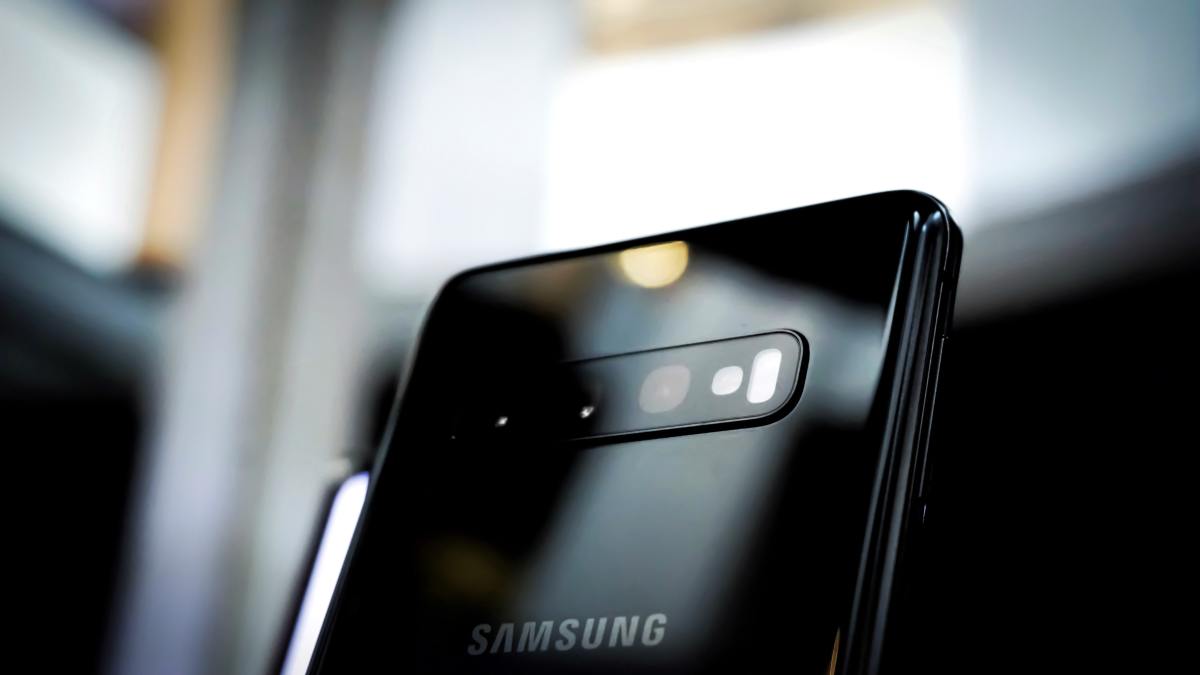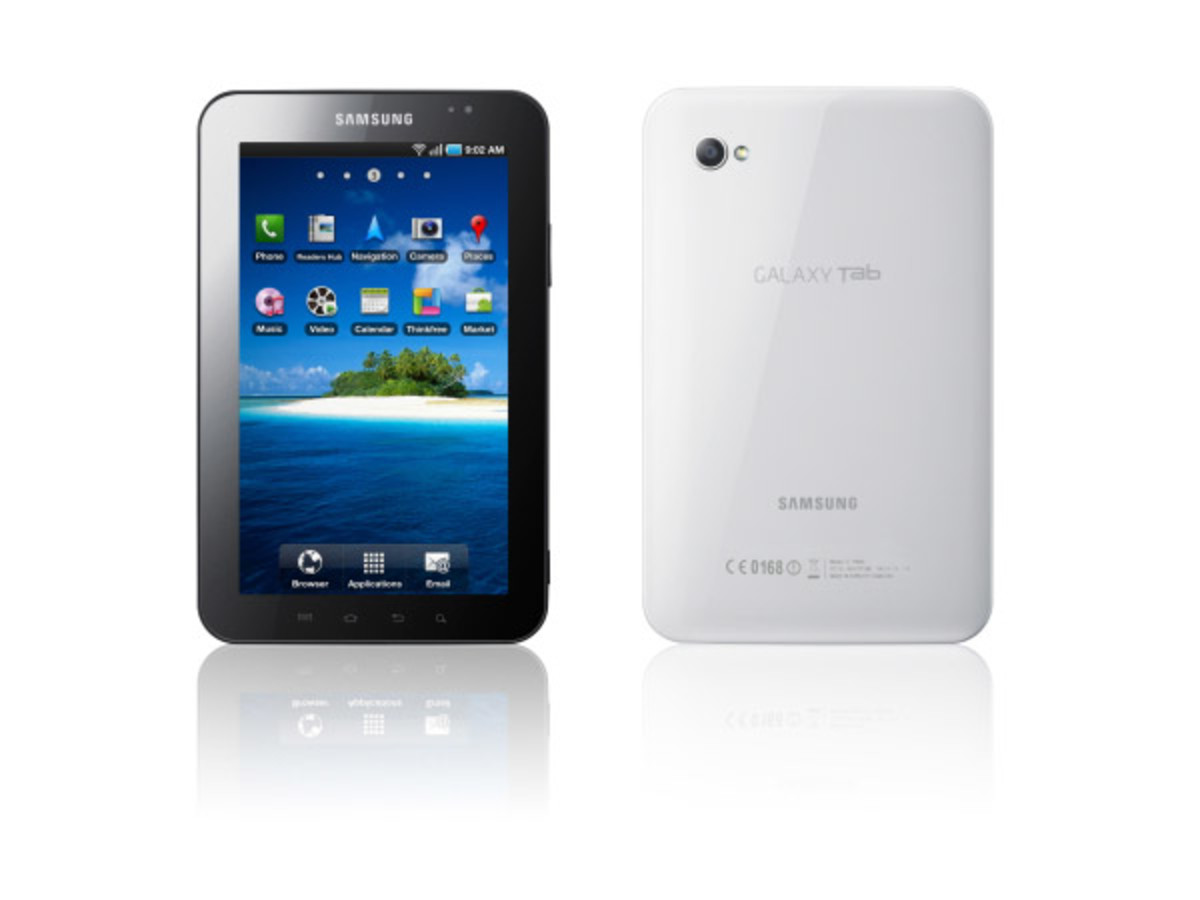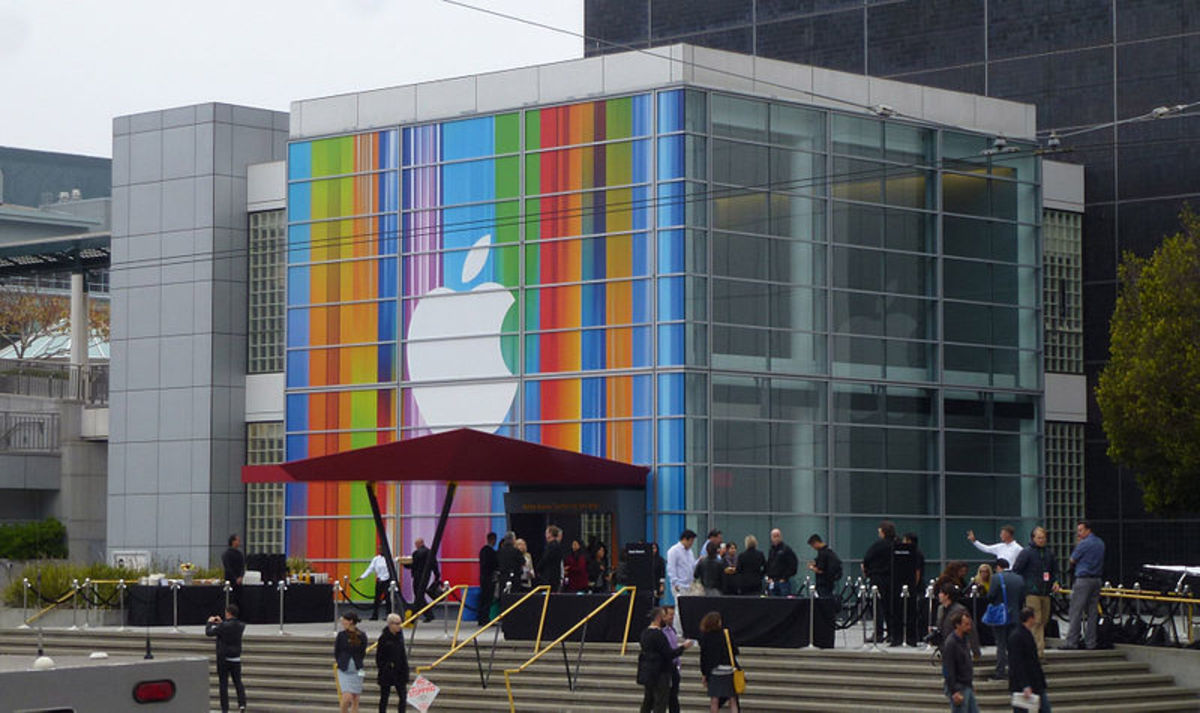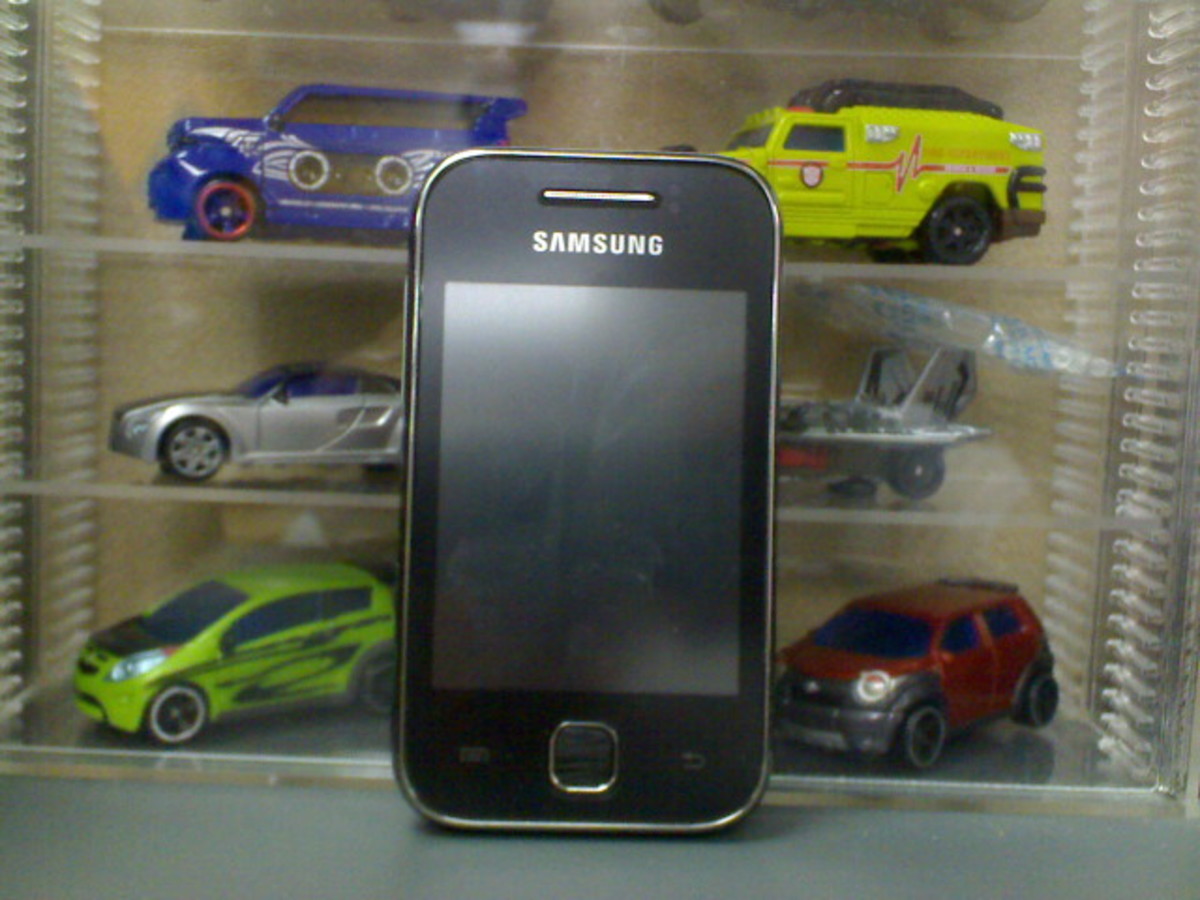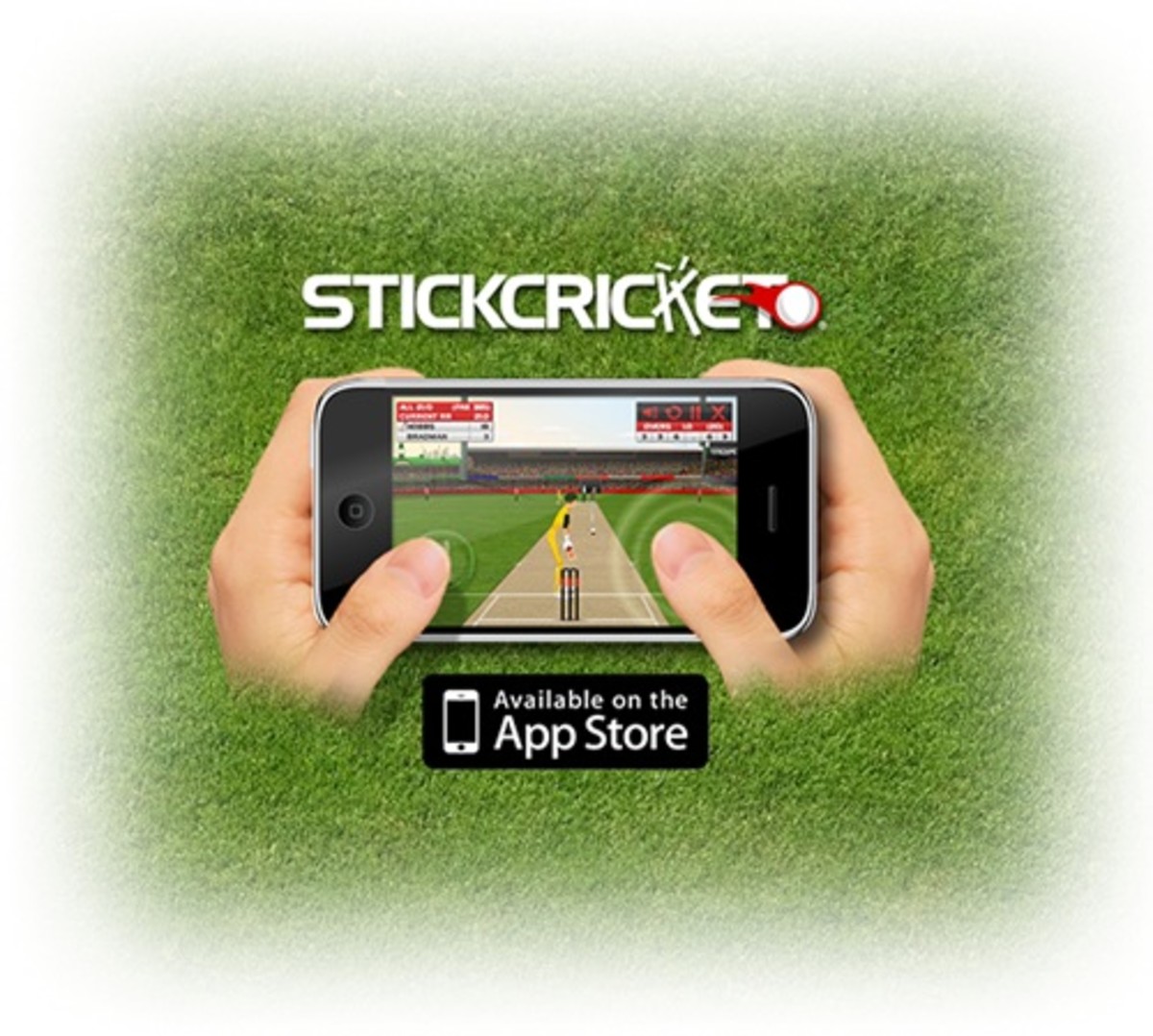iPhone 5 vs. Samsung Galaxy SIII vs. HTC One X (Comparison of Specs, Features, Hardware, Display, Camera, OS, Software)
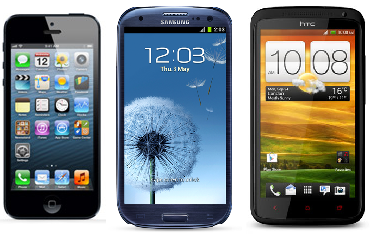
Apple iPhone 5, Samsung Galaxy SIII and HTC One X are all great smartphones and it seems like those will be the three main flagships of 2012, so it is quite logical to put them side by side and to try to compare them as thoroughtly as possible. In order to be able to make an informed choice, a customer needs to know the pros and the cons of each device and then to chose not the universally best device pointed out by an article on the internet, but the device that would suit them the most in their everyday life.
For a wider selection of smartphones you could also view: Smartphone Buying Guide 2012
Technical Specifications
So the first thing we'll look at are the internals of the 3 top-level smartphones. You can find all the details in the table below. If we are talking processing power the iPhone 5 seems a bit underpowered compared to the other two smartphones running on double the number of cores and on top of that, at a higher clock speed. If you take the international models, the Samsung Galaxy SIII with its homegrown Samsung quad-core processor and its astounding 2GB of RAM is the giant of the trio, but the HTC One X comes very close and offers even a tad of a higher clock speed supported by the more mundane 1GB of RAM. And if we are talking specs, it's also good to mention that we have the same picture talking about hardware features despite the fact that things are close - Samsung's flagship is the most feature packed with HTC's coming close but second and the iPhone holding the obvious third.
But let's not forget that this is by far not the full picture and most users would never dig into this type of information, putting a bigger emphasis on software abilities and user experience. For many people, if everything runs smoothly - the specs are meaningless. So the actual performance is quite important and this is what made the iPhone the icon that it is, so read make sure to read on.
iPhone 5
| Samsung Galaxy SIII
| HTC One X
| |
|---|---|---|---|
OS
| iOS 6
| Android 4.0.4 (Icecream Sandwich) with TouchWiz 4.0
| Android 4.0.1 (Icecream Sandwich) with HTC Sense 5.0
|
Processor
| 1.2GHz Dual-Core Apple A6
| 1.4GHz Quad-core Samsung Exynos / 1.5GHz Dual-Core Qualcomm Snapdragon S4*
| 1.5GHz Quad-Core (4+1) nVidia Tegra 3 / 1.5GHz Dual-Core Qualcomm Snapdragon S4*
|
Display
| 4.0" (1136 x 640)
| 4.8'' (1280 x 720)
| 4.7'' (1280 x 720)
|
Display Technology
| LED-backlit IPS TFT
| HD Super AMOLED (PenTile)
| Super LCD 2
|
Pixel Density
| 326ppi
| 306ppi
| 316ppi
|
RAM
| 1GB
| 2GB / 1GB*
| 1GB
|
Memory
| 16 / 32 / 64 GB
| 16 / 32 GB
| 16 / 32 GB
|
External Memory
| No
| Up to 64GB (MicroSD)
| No
|
Dementions
| 123.8 x 58.6 x 7.6 mm
| 136.6 x 70.6 x 8.6 mm
| 134.6 x 69.9 x 8.9mm
|
Weight
| 114g / 3.95 oz.
| 133 grams / 4.7 oz.
| 130 grams / 4.6 oz
|
Camera
| 8MP / f/2.4
| 8MP / f/2.6
| 8MP / f/2.0
|
Flash
| LED
| LED
| LED
|
Front Camera
| 1.2MP
| 1.9MP
| 1.3MP
|
Video Capture
| HD (1080p)
| HD (1080p)
| HD (1080p)
|
Battery
| 1,418mAh
| 2,100mAh Li Ion
| 1,800mAh Li Ion
|
Removable Bettery
| No
| Yes
| No
|
Wireless Charging
| No
| Yes
| No
|
Video Outputs
| Dock
| HDMI, MHL, DLNA
| HDMI, MHL, DLNA
|
NFC
| No
| Yes
| Yes
|
Cloud Sync
| iCloud
| Dropbox 50GB
| Dropbox 25GB
|
Location / Orientation Sensors
| A-GPS, GLONASS, compass, accelerometer, gyroscope, proximity sensor
| A-GPS, compass, accelerometer, gyroscope, barometer, proximity sensor
| A-GPS, compass, accelerometer, gyroscope, proximity sensor
|
Release Date
| September, 2012
| June, 2012
| May, 2012
|
*Depends on the version (international, local or carrier specific)
Technical Specifications winner: Samsung Galaxy SIII (preferably the international version)
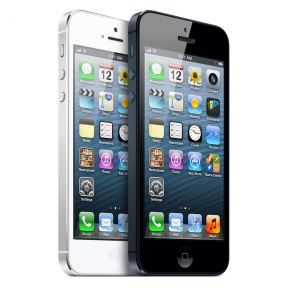
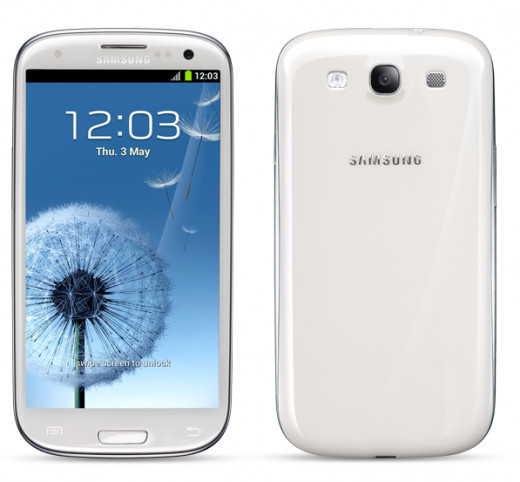
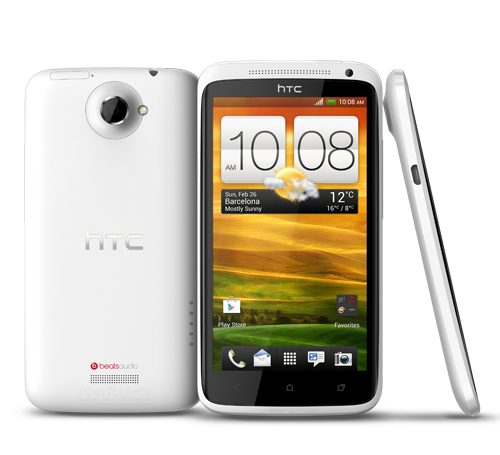
Design
Now, this is one of the most subjective parts of a review, or in this case a device comparison. Each phone has its own esthetics and a community of devoted fans that see its design as perfection.
For the new iPhone 5 Apple went with what they know best. Clean but attractive design, high build quality and universal functionality. The phone is build mainly from aluminum and glass and feels great to hold. The boldest change that they made to it, is the screen size, which was bumped up to 4 inches. But the phone became only taller, but not wider. This means that it will not be more unpleasant to hold than the iPhone 4S, for instance, but will provide all the benefits of a larger screen displaying more information. The fact that the iPhone 5 is actually the thinnest and lightest in the group makes it own this comparison category.
The Samsung Galaxy SIII looks nice and its shape inspired by nature makes it pleasant to hold despite it's large size, dictated by it's large screen. Samsung stayed true to their cheap plastic design philosophy and the fact that the Galaxy line's flagship feels a bit cheap in the hand is its biggest setback, especially in the company of the iPhone 5 and HTC One X.
HTC also went with what they know best and offered a nice large phone with a clean design made out of polycarbonate (still a type of plastic) that makes it feel much more premium compared to the Samsung. It's a good looking phone that is a bit more rounded than the iPhone and will probably also find its fans.
Design Winner: Apple iPhone 5
Display
Well, this might be one of the most important functional category in the comparison of the three. The display is the way we interact with our modern smartphones and the display quality is something that you are going to look at literary every 10 minutes of every day. So there should be no compromise here and compared to older phones or to lower level phones, none of the devices is a compromise, but still there are differences between them.
First of all, one of the most obvious differences is the size of the display for each device. For the users that want the largest possible display that might be comfortable to hold, the Galaxy SIII having the biggest display of the three, or the HTC One X will be the obvious choice. The iPhone 5 also got a bigger screen in order to be able to compete with this new flagship giants, but it's still smaller.

But size is not everything. If we look at the display quality, iPhone's Retina display has a lot to show for. It has the highest pixel density which means clarity. The fact that the touch capability is incorporated directly into the screen itself and not on top of it as most devices on the market right now (Samsung Galaxy SIII and HTC One X included) also gives it another edge. The HTC One X has a higher pixel density than the Samsung Galaxy SIII since they both have the same resolution, but the HTC's dispay is a tiny bit smaller. Another drawback for the Samsung is that it's using Samsung's patented PenTile technology, which means that each pixel is made up of two colors while borrowing the missing color from another pixel near by. The One X's display is actually one of the most vibrant and gorgeous displays out there.
Of course, many users will not even see the difference and each of the devices offers a gorgeous display, but with a top-of-the-line devices, we should settle for nothing but perfection.
Display Quality Winner: iPhone 5, HTC One X | Display Size Winner: Samsung Galaxy SIII | Display Quality Loser: Samsung Galaxy SIII
OS And Software
The three flagships compared here are all representatives of the two most prominent mobile operating systems - Apple's iOS and Google's Android. iOS is what powers the iPhones, iPads and iPod Touches for Apple while Android is Google's open source answer which powers hundreds (if not already thousands) of different mobile devices from all kinds of manufacturers. While the iPhone 5 is the device iOS 6 was actually built for, both Samsung and HTC decided to tamper heavily with Google's Andoid 4.0 Ice Cream Sandwich (ICS). So let's see what we have.

The first thing we need to know about the differences between iOS and Android is that they cater to a slightly different group of users. The biggest strength of iOS is its simplicity. It's a clean, user-friendly, yet functional operating system that could serve well both the nerd and her grandma. There are also no widgets and the customization menus are much shorter. And, of course, the selling point that cannot be denied - the highest number of high quality apps available for purchase or free to download. On the other hand Android is a much more powerful solution which provides a much higher level of customization with widgets and all kinds of bells and whistles. So while iOS might be the more obvious choice for the average user that doesn't mind forking out for an iPhone, Android might be a very nice option for the power user who want to fiddle with absolutely everything.
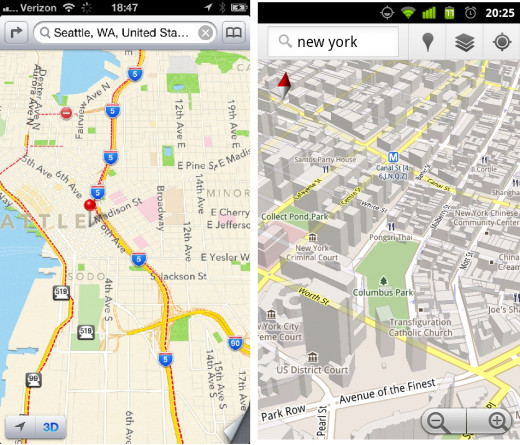
So having in mind the general differences between the two operating systems, we can finally look at how they work for the three devices we are comparing. The iPhone 5 with its iOS 6 provides the typical clean and pleasant user experience with some nice options like the Siri voice assistant. Unfortunately, with the software on this device, Apple pulled the biggest blunder of their modern history, proving that they are prone to failure, too - they messed up their Maps app completely. With iOS 6 Apple decided that it has had enough of using their competitor's product Google Maps and that they are finally going to build a native iPhone app for maps. Sounded like a logical step on paper. But Apple failed by shipping a barely breathing Maps app. It is full of inaccuracies and mistakes making it difficult to use in real life especially if you don't live in one of the major US cities. At the same time all the Android users including the people owning a Samsung Galaxy SIII or an HTC One X are sailing along smoothly with the best navigation app out there - Google Maps.
But the OS and software powering the Samsung Galaxy SIII and the HTC One X has a long way to go before reaching perfection, too. Android 4.0 Ice Cream Sandwich was praised as the best Android version so far upon its release, but neither Samsung, nor HTC went with the stock ICS experience. Samsung slapped their TouchWiz 4.0 skin on top of it, which is something that the device would have been even faster without (no matter if you find it useful or not). Its really a matter of personal taste, if you like the way it handles, but Samsung made sure to put in as much cool software functions as possible. It has some unique options like a detachable video player that allows you to view it in a window while performing other tasks like texting, browsing or reading e-mail. If all of the bells and whistles outshine the iPhone is a matter of personal taste, but we need to mention that the OS is one tiny bit less responsive than iOS 6 which is most probably due to the skin being layered on top of the operating system itself.
HTC took a similar approach to Samsung's and covered the Android 4.0 Ice Cream Sandwich with their own custom skin called Sense 5.0. It provides a balanced user experience that people who have used an HTC smartphone before will most probably be familiar with. The phone is responsive enough and it seems to let more of ICS show through. Compared to the Galaxy SIII, it has a little bit less bells and whistles, but also suffers a tiny bit from having to run the custom skin on top of the OS as well. But if you want Android's flexibility and customization options and like the feel of the Sense 5.0 interface, this device might be a very compelling choice.
Additional Resources
- Five Cool And Interesting Android 4.1 Jelly Bean New Features
A detailed analysis of Android's new faster and better optimized new version discussing all the useful new additions to the software. Talking about the amazing Project Butter, Google voice search, new push notifications, Google Now and more.
It's also important to say that Google have come out with a new version of Android which is 4.1 and uses the codename Jelly Bean. It is very similar to Ice Cream Sandwich, but it is much more optimized, runs extremely quickly, which helps it provide the most brisk, responsive, and polished Android user experience we've seen so far. So Android 4.1 Jelly Bean could really eat out Apple's advantage and help the two Android devices in this comparison to do much better against their main rival - the iPhone. It also has a great voice search options which rivals Siri and could make them even more competitive. It's also a question if Samsung and HTC would also put their skins on top of it and how the newer version of the operating system will handle after their adjustments and refinements.
OS Winner: too subjective to decide
Comparing the cameras
-
| iPhone 5
| Galaxy S3
| HTC One X
|
|---|---|---|---|
Sensor
| 8MP
| 8MP
| 8MP
|
Technology
| BSI CMOS
| BSI CMOS
| BSI CMOS
|
Aperture
| f2.4
| f2.6
| f2.0
|
Lens
| 33mm
| 27mm
| 28mm
|
Flash
| LED
| LED
| LED
|
HDR
| Yes
| Yes
| Yes
|
Panorama
| Yes
| Yes
| Yes
|
Burst
| No
| Yes
| Yes
|
White Balance, ISO And Resolution Settings
| No
| Yes
| Yes
|
Scene And Filter Settings
| No
| Yes
| Yes
|
Facial Recognition
| No
| Yes
| No
|
Camera
The three flagships are quite evenly matched and the camera feature is also quite tough to call, but this is an important functionality and some customers value and care about this feature a lot, so for many this could be decisive. At first glance, all of the devices covered here have the same 8MP Back Side Illuminated (BSI) CMOS power, but their cameras are not really the same. First off all, back side illumination is a great thing about the sensor, allowing it to take in more light, which means a better low light performance.
So let's start with the iPhone 5. The camera sensor it's packing is very similar to what was used for the iPhone 4S. The most important improvements are the low light performance which has improved significantly and the long due addition of a panorama mode. What is important with the iPhone 5's camera are not the features, but the quality. It actually provides the richest and warmest color of the three and manages to produce the highest quality photos of the three. The only area where it gets beaten fair and square is low light performance where the its two main Android rivals fair noticeably better. It also provides a great HDR performance, which is important for outdoor scenes and places where different parts of the photo are lit in a different way. HDR stands for high dynamic range and combines multiple photos, each taken to expose for the bright and dark areas, which are then combined to create a more even exposure. The iPhone 5 has a dedicated camera button which makes taking a photo as natural as possible and it provides the simplest possible interface with only two options - HDR and panorama. Even changing the resolution of the photos taken is not possible. In the end, the iPhone 5 produces the best photos of the three, but provides little to none customization.
The two Android rivals, on the other hand, provide a totally different approach. Their native camera applications provide all kind of options for control and customization and their handling is much more similar to that of a point-and-shot dedicated camera. Besides having the mandatory HDR and panorama modes, both devices have adjustable white balance, ISO, scene and filter settings that allow a much better options for the more creative users that demand being in control. Both the HTC One X and the Samsung Galaxy SIII are packed with additional features like burst modes and Samsung's offering provides even facial recognition and automatic sharing of photos with the people that the smartphone recognizes on them. So all of these bells and whistles are quite nifty, but the image quality might end up being the most decisive factor for many. The HTC One X is the better of the two Android devices in that aspect. The photos it takes can come close to the quality of the ones taken with the iPhone 5, but in most of the cases Apple's device manages to keep its superiority even if its by just a bit. The Samsung Galaxy SIII has the highest number of additional features, but compared to the other two devices, the quality of the photos produced is simply not on par with most of the photos having less color saturation and detail.
So in the end, the iPhone 5 provides the highest image quality, but if you demand being in complete control, the HTC One X provides another high quality alternative with a high level of customization.
Camera Winner: Apple iPhone 5, HTC One X | Image Quality Winner: Apple iPhone 5
Additional Features
The competition in the high-end smartphone market segment is more heated than ever and every manufacturer that wants to compete with the current market leader Apple tries to pack as much functionality in to their devices in order to try and attract as many customers as possible. So naturally, the two Android contestants here have much more additional features than Apple, who are still betting on clean and simple, which seems to be working.
Something the iPhone 5 lacks compared to the Samsung Galaxy S3 and the HTC One X is an NFC chip. NFC stands for near field communication and despite not having permeated the market yet, it allows for instantaneous file sharing between devices, mobile payments and all kinds of other cool stuff that can be achieved through putting NFC tiles (one inch stickers) and tapping them to instantly get information or chance settings. It means you could have an NFC tile on your nightstand that would put your smartphone on silent as an easy example. So for now, no Apple device packs this technology while it has become standard for competing devices.
Additional Resources
- Five Cool And Interesting Samsung Galaxy SIII Features
The Samsung Galaxy SIII and it's five best and most unique features that might convince you to buy it.
As far as the software goes, both HTC and Samsung made sure to include as much of additional functionality as they could in their heavy but packed Android skins. But the device that really stands out with its additional features and extras, this is the Samsung Galaxy SIII. First of all, it has a microSD expandable memory slot and a removable battery which are both utilities that could make one's life much easier. On top of it all, it is full of software bonuses like a detachable video player that allows you to multitask while watching a video at the same time.
The only additional feature that the iPhone 5 has that the two Android devices don't is a three microphone noise cancellation setup which once more highlights Apple's attention to details and emphasis on quality in stead of extras.
Additional Features Winner: Samsung Galaxy SIII
Additional Resources
- Smart Phone Buying Guide 2012
If you want to see the broader picture, this guide will help you out. - What are Different Types of Smartphone Applications
Smartphones and their best feature - running all kinds of fun or useful apps.
Final Verdict and Summary
In the end, each device has its strengths and weaknesses and it's a matter of personal taste, needs and desires to put an emphasis on a different set of features. We don't live in a world of universal winners and this is a good thing, because it means that one could choose the device that fits them and their personality the most. All of the these high-end flagship devices are actually a good choice and will provide you with tons of functionality. The thing that blurs the differences even more is the best general smartphone feature - the ability to run apps. There are so many applications out there that one could expand their smartphone to do all kinds of useful or entertaining tasks no matter what the make of the device is.
So look inside yourself, weigh in your needs, wishes and desires and choose the smartphone that would fit your personal picture best.

